

Metaverse
What happened to the artificial-intelligence revolution? – Crypto News
In the world’s tech capital it is taken as read that AI will transform the global economy. But for AI to fulfil its potential, firms everywhere need to buy big tech’s AI, shape it to their needs and become more productive as a result. Investors have added $2trn to the market value of the five big tech firms in the past year—in effect projecting an additional $300bn-400bn in annual revenues according to our rough estimates, about the same as another Apple’s worth of annual sales. For now, though, the tech titans are miles from such results. Even bullish analysts think Microsoft will only make about $10bn from generative-AI-related sales this year. Beyond America’s west coast, there is little sign AI is having much of an effect on anything.
One problem is the rate of adoption. Reputable companies are putting out startling estimates of how many people are using generative AI. Close to two-thirds of respondents to a recent survey by McKinsey, a consultancy, say that their company is “regularly using” the tech, nearly twice as many as the year before. A report by Microsoft and LinkedIn, an online platform for professionals, finds that 75% of global “knowledge workers” (folk who sit in front of a computer) use it. People are, on such accounts, already in an AI world.
And in a sense, they are. Almost everyone uses AI when they search for something on Google or pick a song on Spotify. But the incorporation of AI into business processes remains a niche pursuit. Official statistics agencies ask AI-related questions to businesses of all varieties, and in a wider range of industries than do Microsoft and LinkedIn. America’s Census Bureau produces the best estimates. It finds that only 5% of businesses have used AI in the past fortnight (see chart 1). Even in San Francisco many techies admit, when pressed, that they do not fork out $20 a month for the best version of ChatGPT.
View Full Image
It is a similar story elsewhere. According to official Canadian numbers, 6% of the country’s firms used AI to make goods and provide services in the past 12 months. British surveys suggest use there is higher—at 20% of all businesses in March—though the questions are asked differently. And even in Britain use is growing slowly. The same share used AI last September.
Concerns about data security, biased algorithms and hallucinations are slowing the roll-out. McDonald’s, a fast-food chain, recently canned a trial that used AI to take customers’ drive-through orders after the system started making errors, such as adding $222-worth of chicken nuggets to one diner’s bill. A consultant says that some of his clients are struck with “pilotitis”, an affliction whereby too many small AI projects make it hard to identify where to invest. Other firms are holding off on big projects because AI is developing so fast, meaning it is easy to splash out on tech that will soon be out of date.
Companies that are going beyond experimentation are using generative AI for a narrow range of tasks. Streamlining customer service is perhaps most common. ADP, a payroll firm, boasts of “a new feature that enables our small-business clients to…leverage gen AI to answer questions and better understand how to initiate an HR action”. Other firms use the tech for marketing. Verizon, a telecoms firm, says that it employs AI to create a better “personalised plan recommendation” for its customers; Starbucks, a coffee chain, uses it to make “more personalised customer offers”.
If you think that such efforts seem unimpressive, you are not alone. Goldman Sachs has constructed a stockmarket index tracking firms that, in the bank’s view, have “the largest estimated potential change to baseline earnings from AI adoption via increased productivity”. The index includes firms such as Walmart, a grocer, and H&R Block, a tax-preparation outfit. Since the end of 2022 these companies’ share prices have failed to outperform the broader stockmarket (see chart 2). In other words, investors see no prospect of extra profits. The tech could even be distracting executives from more pressing matters.

View Full Image
What of the anecdotes that some firms are using AI to transform their operations? Klarna is one frequently cited example. The online financial-services firm recently claimed its AI assistant was doing the work of 700 full-time customer-service agents. Its boss says that, as a result of the tech, employment at the company is falling by a fifth each year. Yet this is, at best, an incomplete picture. Klarna is looking to go public before long: talking about its use of AI drums up press. According to data from CB Insights, a consultancy, Klarna’s headcount started to drop long before AI came on the scene. The company is worth perhaps half as much as it was in 2021. If it is now cutting employees, overhiring during the covid-19 pandemic deserves as much blame as AI takes credit.
Indeed, there is no sign in the macroeconomic data of a surge in lay-offs. Kristalina Georgieva, head of the IMF, recently warned that AI would hit the labour market like “a tsunami”. For now, however, unemployment across the rich world is below 5%, close to to an all-time low. The share of rich-world workers in a job is near an all-time high. Wage growth also remains strong, which is hard to square with an environment where workers’ bargaining power is supposedly fading.
Nor does an AI effect emerge if you dig more deeply into the numbers. Workers are not moving between companies faster than usual, as would probably happen if lots of jobs were being destroyed. Using American data on employment by occupation, we focus on white-collar workers, who range from back-office support to copywriters. Such roles are thought to be vulnerable to AI, which is becoming better at tasks that involve logical reasoning and creativity. Despite this, the share of employment in white-collar professions is a percentage point higher than before the pandemic (see chart 3).

View Full Image
Some economists think AI will transform the global economy without booting people out of jobs. Collaboration with a virtual assistant may improve performance. A new paper by Anders Humlum of the University of Chicago and Emilie Vestergaard of Copenhagen University surveys 100,000 Danish workers. The average respondent estimates ChatGPT can halve time spent on about a third of work tasks, in theory a big boost to efficiency.
Yet macroeconomic data also show little evidence of a surge in productivity. The latest estimates, using official figures, suggest that real output per employee in the median rich country is not growing at all. In America, the global centre of AI, output per hour remains below its pre-2020 trend. Even in global data derived from surveys of purchasing managers, which are produced with a shorter lag, there is no sign of a productivity surge (see chart 4).

View Full Image
For such a spurt, firms need to invest in AI. Besides big tech—which is anyway spending chiefly to develop AI products for others, rather than to boost its own productivity—most companies are not really doing so. Capex among the rest of the S&P 500, made up of America’s largest firms, is likely to fall this year in real terms. Across America’s economy as a whole, it is hardly rising. Overall business investment in information-processing equipment and software is rising by 5% year on year in real terms, well below the long-run average. Across the rich world, investment is rising more slowly than during the 2010s.
In time, businesses may wake up to the true potential of AI. Most technological waves, from the tractor and electricity to the personal computer, take a while to spread across the economy. Indeed, on the assumption that big tech’s AI revenues grow by an average of 20% a year, investors expect that almost all of big tech’s earnings from AI will arrive after 2032, according to our analysis. If an AI bonanza does eventually materialise, expect the share prices of the users of AI, not only the providers, to soar. But if worries about ai grow, big tech’s capex plans will start to look as extravagant as its valuations.
© 2024, The Economist Newspaper Ltd. All rights reserved. From The Economist, published under licence. The original content can be found on www.economist.com
-

 Cryptocurrency7 days ago
Cryptocurrency7 days agoIlluminating progress: Is a $140K income ‘poor’? – Crypto News
-
Technology6 days ago
Crypto Lawyer Bill Morgan Praises Ripple’s Multi-Chain Strategy as RLUSD Hits $1.1B – Crypto News
-
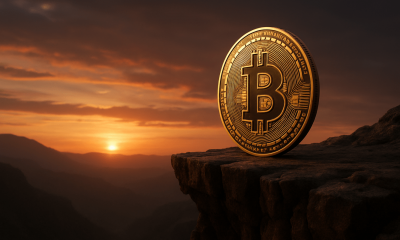
 Blockchain5 days ago
Blockchain5 days agoAnalyst Reveals What You Should Look Out For – Crypto News
-

 Technology1 week ago
Technology1 week agoSamsung Galaxy S25 Ultra 5G for under ₹80,000 on Flipkart? Here’s how the deal works – Crypto News
-
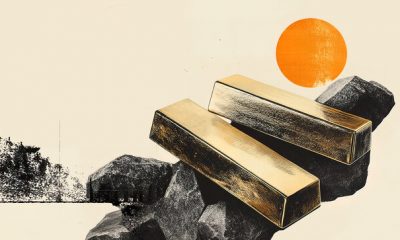
 others7 days ago
others7 days agoGold holds strong at $4,200 as Fed-cut anticipation builds – Crypto News
-
Cryptocurrency1 week ago
Crypto Platform Polymarket Relaunches in U.S. Following CFTC Approval – Crypto News
-

 Cryptocurrency1 week ago
Cryptocurrency1 week agoUK recognises crypto as property in major digital asset shift – Crypto News
-
others1 week ago
Bitcoin Price Forecast as BlackRock Sends $125M in BTC to Coinbase — Is a Crash Inevitable? – Crypto News
-

 Cryptocurrency7 days ago
Cryptocurrency7 days agoCrypto Holiday Gift Guide 2025 – Crypto News
-
others5 days ago
Breaking: Labor Department Cancels October PPI Inflation Report Ahead of FOMC Meeting – Crypto News
-

 Cryptocurrency5 days ago
Cryptocurrency5 days agoArgentina moves to reshape crypto rules as banks prepare for Bitcoin services – Crypto News
-

 Blockchain4 days ago
Blockchain4 days agoStripe and Paradigm Open Tempo Blockchain Project to Public – Crypto News
-

 Cryptocurrency1 week ago
Cryptocurrency1 week ago‘Get it done on time’ – Lawmakers push regulators on GENIUS Act rollout – Crypto News
-
Business1 week ago
Crypto Platform Polymarket Relaunches in U.S. Following CFTC Approval – Crypto News
-

 Technology1 week ago
Technology1 week agoWorking on a screen all day? These 8 LED monitors in Dec 2025 are kinder on your eyes – Crypto News
-
others7 days ago
Morgan Stanley Turns Bullish, Says Fed Will Cut Rates by 25bps This Month – Crypto News
-

 Cryptocurrency7 days ago
Cryptocurrency7 days agoFlorida Appeals Court Revives $80M Bitcoin Theft – Crypto News
-

 Cryptocurrency1 week ago
Cryptocurrency1 week agoBTC staking platform Babylon teams up with Aave for Bitcoin-backed DeFi insurance – Crypto News
-

 Blockchain1 week ago
Blockchain1 week agoSolana (SOL) Cools Off After Rally While Market Eyes a Resistance Break – Crypto News
-
others1 week ago
XRP Price Prediction As Spot ETF Inflows Near $1 Billion: What’s Next? – Crypto News
-

 others1 week ago
others1 week agoThe rally to 7120 continues – Crypto News
-
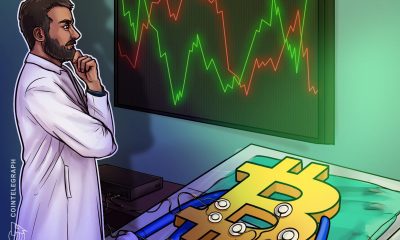
 Blockchain7 days ago
Blockchain7 days agoBitcoin Buries The Tulip Myth After 17 Years: Balchunas – Crypto News
-

 Cryptocurrency6 days ago
Cryptocurrency6 days agoWhy Ethereum strengthens despite whale selling – Inside Asia premium twist – Crypto News
-

 others6 days ago
others6 days agoNasdaq futures hold key structure as price compresses toward major resistance zones – Crypto News
-

 others6 days ago
others6 days agoNasdaq futures hold key structure as price compresses toward major resistance zones – Crypto News
-

 Blockchain4 days ago
Blockchain4 days agoBMW Helps JPMorgan Drive Blockchain-Based FX Payments – Crypto News
-

 Blockchain1 week ago
Blockchain1 week agoLedger Finds Chip Flaw Allowing Complete Phone Takeover – Crypto News
-
Business1 week ago
Kalshi, Robinhood and Crypto com Face Cease & Desist Order in Connecticut – Crypto News
-
Business1 week ago
What’s Next for Dogecoin Price After Whales Scoop 480M DOGE? – Crypto News
-
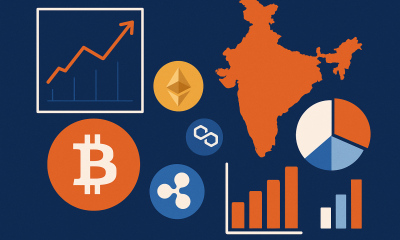
 Cryptocurrency1 week ago
Cryptocurrency1 week agoCoinDCX data reveals India’s rising appetite for diversified digital assets – Crypto News
-
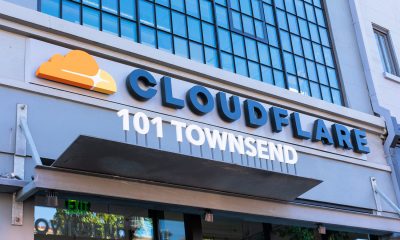
 Technology1 week ago
Technology1 week agoCloudflare Resolved Services Issues Caused by Software Update – Crypto News
-
others1 week ago
Colombia Consumer Price Index (YoY) below forecasts (5.45%) in November: Actual (5.3%) – Crypto News
-
Technology1 week ago
Solana Price Outlook: Reversal at Key Support Could Lead to $150 Target – Crypto News
-

 Technology1 week ago
Technology1 week agoFrom security camera to gaming hub: 6 Easy tricks to make your old smartphone genuinely useful again – Crypto News
-
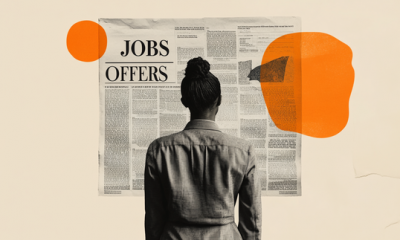
 others1 week ago
others1 week agoCanadian Dollar soars after upbeat labor report – Crypto News
-
others1 week ago
$1.3T BPCE To Roll Out Bitcoin, Ethereum and Solana Trading For Clients – Crypto News
-

 others6 days ago
others6 days agoStocks survive PCE and consumer data – FOMC too? – Crypto News
-

 Cryptocurrency6 days ago
Cryptocurrency6 days agoThursday links: Prediction markets, agent hackers, quantum risks – Crypto News
-
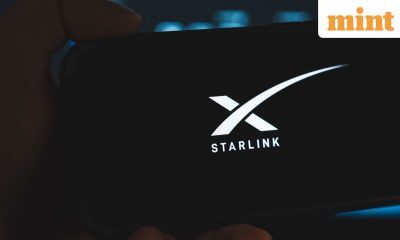
 Technology6 days ago
Technology6 days agoStarlink India pricing revealed: How much does monthly plan cost and what are its benefits? – Crypto News
-

 Cryptocurrency1 week ago
Cryptocurrency1 week agoCayman Islands sees rising Web3 foundation activity – Crypto News
-

 Technology1 week ago
Technology1 week agoApple Watch’s latest update drops a lifesaving feature for Indian users: here’s how it works – Crypto News
-

 Metaverse1 week ago
Metaverse1 week agoBetter Tomorrow: How OpenAI is reimagining education and inclusion for the digital age – Crypto News
-
Business1 week ago
Bitcoin, ETH, XRP, SOL’s Max Pain Price as Over $4B Options to Expire – Crypto News
-
Business1 week ago
Is ZCash Price Set for a Bigger Rally After Its 10% Surge on the Bitget Listing? – Crypto News
-

 Cryptocurrency1 week ago
Cryptocurrency1 week agoGlassnode report reveals Bitcoin’s growing stability amid ETF activity and RWA expansion – Crypto News
-
Technology1 week ago
Peter Brandt Hints at Further Downside for Bitcoin After Brief Rebound – Crypto News
-
others1 week ago
United States Consumer Credit Change came in at $9.18B, below expectations ($10.5B) in October – Crypto News
-

 Technology6 days ago
Technology6 days agoTier 2 and Tier 3 cities drive over 90% of engagement on audio social platforms in India, says report – Crypto News
-

 Blockchain6 days ago
Blockchain6 days agoBittensor Set for First TAO Halving on Dec. 14 – Crypto News
-

 Blockchain6 days ago
Blockchain6 days agoBitcoin Santa Rally Talk Meets Last FOMC of 2025 – Crypto News














